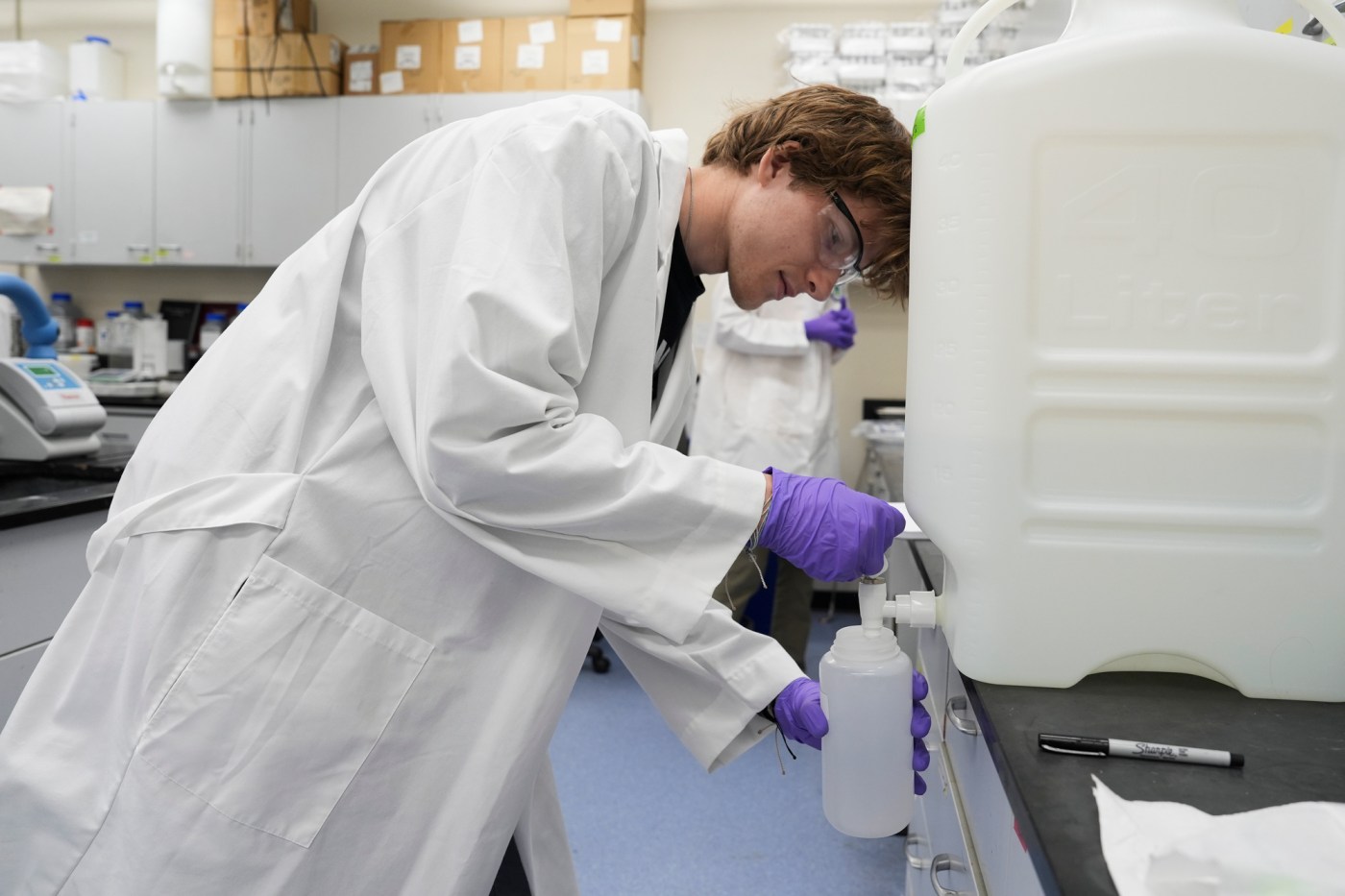
Santa Clara County accuses companies of causing ‘environmental and human health crisis’ via ‘forever chemicals’ in drinking water
One toxic compound killed all the monkeys 3M’s scientists fed it to, and another entered the bodies of pregnant women workers at DuPont and was passed along to their babies. The two companies kept selling products containing these compounds, members of a chemical family known as PFAS, and allegedly covered up the dangerous effects.
Related Articles
Greene: Does Trump actually believe his own nonsense about L.A. fire?
Sierra Nevada snowpack declines after very dry January — but promising storms are arriving to replenish it
State to allocate more water from Northern California, increasing supplies, denting SoCal drought woes
Elias: California water agency supply estimates should be more realistic
Donald Trump’s California water order does more for farms than wildfires
Now the toxins, known as “forever chemicals” for their persistence in the environment, are contaminating Santa Clara County’s drinking water and groundwater, threatening residents’ health and fish and wildlife in the San Francisco Bay, a lawsuit filed last week by Santa Clara County against the pair of chemical giants and other companies claimed.
Delaware-based DuPont and Minnesota’s 3M did not immediately respond to inquiries about the lawsuit’s allegations. The legal action mirrors a lawsuit filed in 2022 against the two companies and other firms by the State of California. DuPont at the time called that lawsuit “without merit,” and 3M said it had “acted responsibly in connection with products containing PFAS.”
A 2023 study by the U.S. Geological Survey found PFAS in almost half of America’s tap water. The compounds remain legal to produce, but are subject to increasing regulation and restrictions on use.
Research has linked the compounds to developmental delays in children and low birth weight, heightened risk of certain cancers, including of the prostate, breasts, kidneys and testicles, and increased cholesterol levels. Research also suggests PFAS degrades the immune system’s infection-fighting response.
Detection of PFAS — an acronym for perfluoroalkyl and polyfluoroalkyl substances — in drinking water wells in San Jose, Cupertino, Sunnyvale, Campbell and Gilroy indicate “widespread contamination of the groundwater underlying the Santa Clara County region,” the lawsuit filed Tuesday in Santa Clara County Superior Court alleged.
The chemicals in water are believed to come from firefighting foams manufactured by companies including DuPont and 3M and present a “serious environmental and public health crisis,” the lawsuit claimed.
During routine firefighter training, PFAS-containing foam sprayed on the ground at training centers and fire stations, and possibly at county airports sent PFAS into the county’s drinking water supplies and groundwater, and to run off into the Bay, the lawsuit claimed.
Studies of PFAS in and around the Bay found the compounds in fish, harbor seals and bird eggs, the lawsuit noted.
The county’s legal action comes amid worldwide attention on PFAS, used widely to create products resistant to water, stains, and heat, including food packaging, non-stick pans, clothing, rain jackets, furniture, carpeting, plastic turf, paints, electronics products and a host of other goods.
Almost everyone in the U.S. has PFAS in their blood, the U.S. Centers for Disease Control has said.
The lawsuit names nearly more than 20 companies involved in the manufacturing and sales of PFAS-containing firefighting foams — claiming all “were careful to withhold the most damning information” about PFAS — but focuses extensively on 3M and DuPont.
In 1978, 3M fed monkeys various dosages of two PFAS compounds, called PFOS and PFOA. Those given PFOS all died within a few days, and those given PFOA all died weeks later, with company researchers concluding both chemicals affected monkeys’ livers and gastrointestinal tracts.
The company “worked actively to stifle research on the adverse effects of PFAS, including PFOA and PFOS,” the lawsuit claimed. Despite knowing PFAS were toxic and potentially cancer-causing, and that they accumulated in the environment, 3M kept making and selling PFAS-based firefighting foam until at least 2000, the lawsuit alleged. The company in 2006 paid a $1.5 million fine to the U.S. Environmental Protection Agency over PFAS, including delays in reporting risks, the lawsuit noted. 3M in 2023 agreed to pay $10 billion to settle PFAS-contamination claims by many U.S. public water agencies.
Related Articles
Greene: Does Trump actually believe his own nonsense about L.A. fire?
Sierra Nevada snowpack declines after very dry January — but promising storms are arriving to replenish it
State to allocate more water from Northern California, increasing supplies, denting SoCal drought woes
Elias: California water agency supply estimates should be more realistic
Donald Trump’s California water order does more for farms than wildfires
DuPont, like 3M, has known about the toxicity of PFAS for decades, as far back as the ’60s when it learned that PFOA caused liver damage in dogs and rats, the lawsuit alleged. In the ’80s, DuPont found female workers exposed to PFOA and who had given birth had passed the compound on to their babies, the lawsuit said.
“DuPont transferred all women out of work assignments with potential exposure to PFOA, but concealed its pregnancy-related study from the workers, the EPA, and the public,” the lawsuit claimed. “By June 2000, DuPont was aware that the American Council of Governmental and Industrial Hygienists had designated PFOA as a ‘confirmed animal carcinogen,’” the lawsuit alleged.
Still, DuPont continued using PFOA in its products, the lawsuit claimed. The company says it continues to use PFAS in products but is “currently pursuing alternatives to PFAS where possible.”
A California law in effect since the start of 2023 bans paper food packaging containing PFAS, and requires cookware manufacturers to disclose the chemicals’ presence in products. Laws took effect this year in California prohibiting sale of clothing other than rain jackets containing PFAS, and cosmetics with PFAS added.
Pleasanton in 2022 shut down all three of its wells after finding PFAS in 2019, and is buying water from an outside agency.
The Centers for Disease Control has some good news for consumers: “Since 2002, production and use of PFOS and PFOA in the U.S. have declined,” leading to dramatic reductions in levels of those chemicals in Americans’ blood. However, the agency also has bad news: “People may be exposed to other PFAS as PFOS and PFOA are phased out and replaced.”


